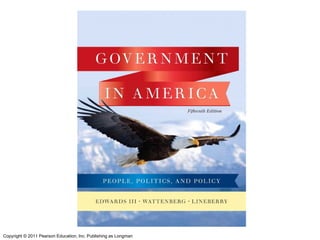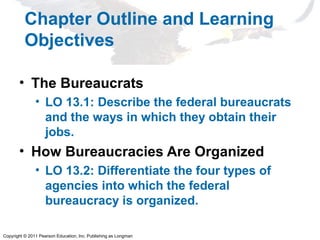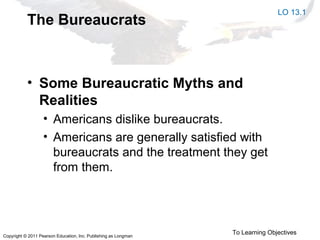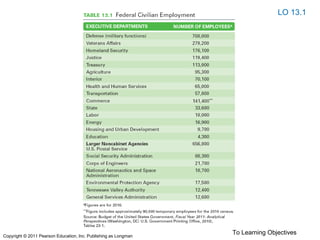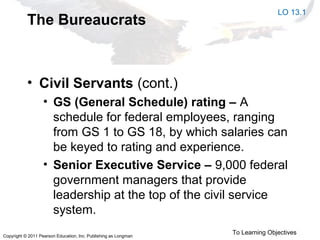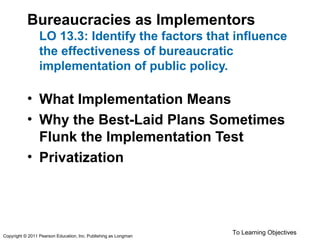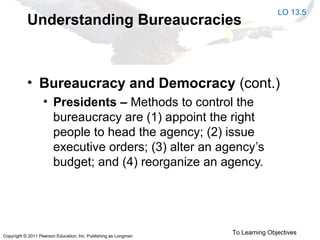This chapter discusses the federal bureaucracy in the United States. It covers the types of federal employees, including civil servants and political appointees. It also outlines the four types of agencies that make up the federal bureaucracy: cabinet departments, independent regulatory commissions, government corporations, and independent executive agencies. The chapter examines how bureaucracies implement policies and regulate different industries, as well as ways that unelected bureaucrats are controlled in American democracy and how bureaucracies impact the scope of government.
